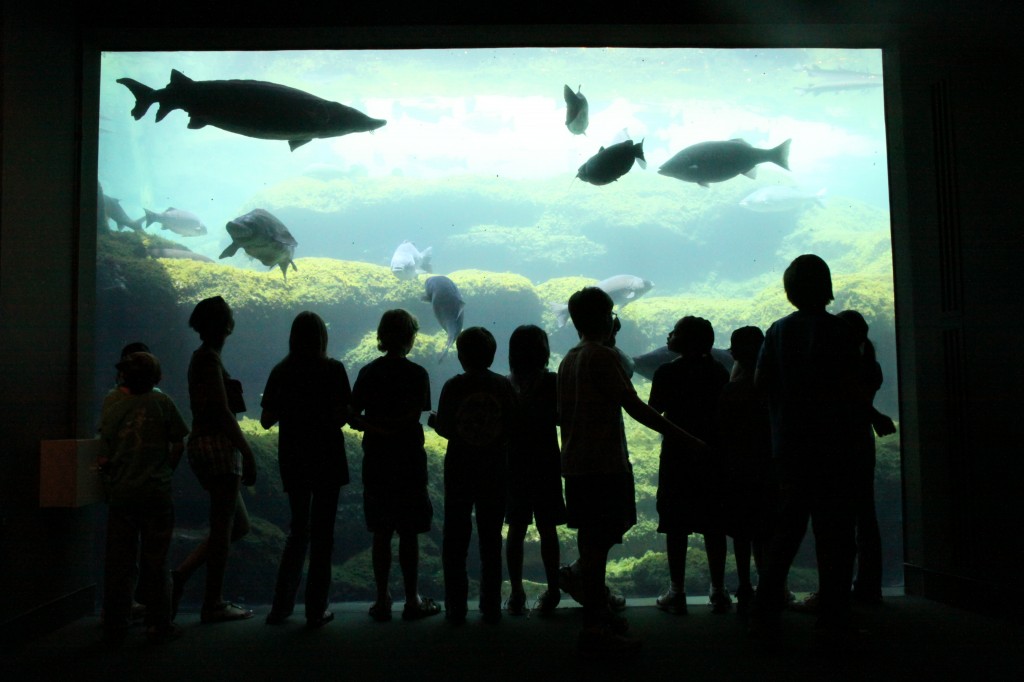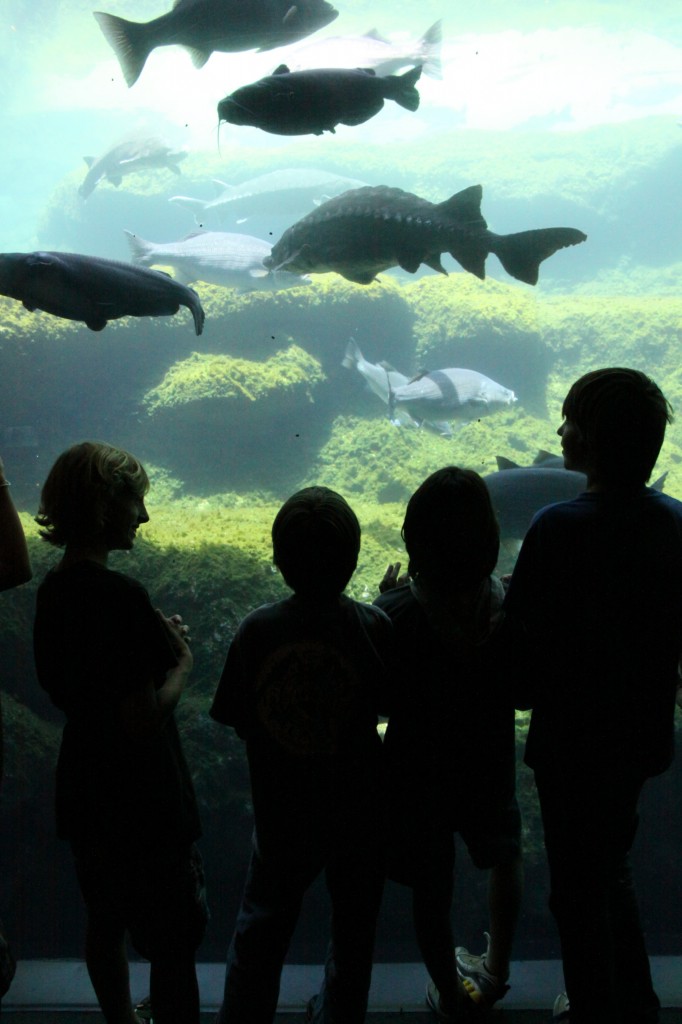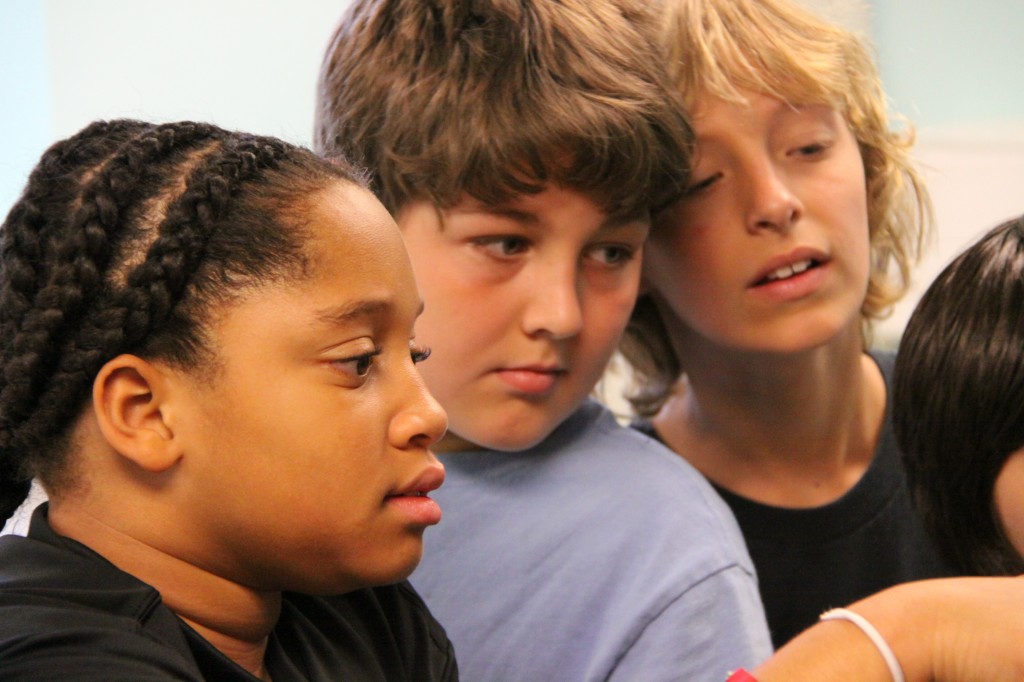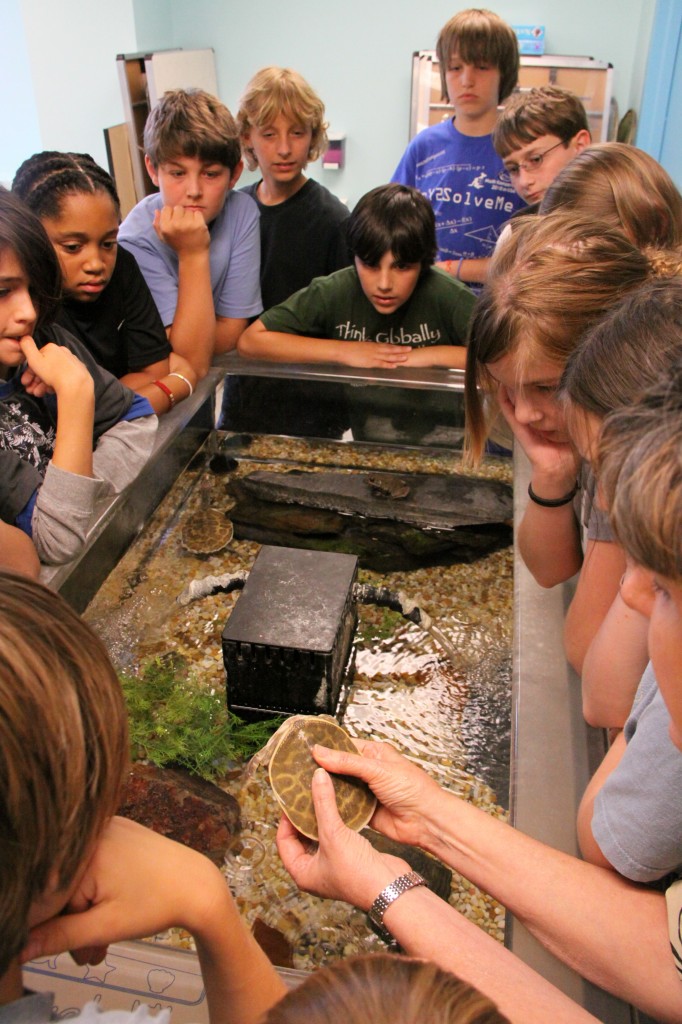Here is the movie that the students and Leslie Patterson put together about the students’ time enduring my class.
Author Archives: Jason Flom
Riverquarium Trip, May 2010
Culture Fair Projects
In order to effectively prepare for the upcoming culture fair (March 1), there are two main components that must be addressed.
- Activating the 5 senses.
- Presentation of information.
The two components are explained below.
Activating the 5 Senses
- Have some way to activate the five senses.
- For taste, be sure to have bite size examples of food or beverage that visitors can easily sample. No need to make so many that you feed everyone. Visitors can choose two samples from entire class, so not everyone will be sampling everything.
Presentation of Information
- Students need to prepare a posterboard presentation (ideally one that can stand on its own).
- The majority of the board’s content should relate to the culture of the people rather than facts about the country. (Example “Social Norms” is more in line with goals of project than “Area and Geography”. Except in the case of teaching about how geography affects the culture of the people.)
- On board they need to include the following components:
- 5 (or more) paragraphs. Each one is related to a cultural topic of interest, such as religion, history, rituals, music, celebrations, entertainment, diversity, foods, customs, etc.
- A Graph (or more) about some aspect of the culture and/or people. The circle graphs create about Haiti are good examples. Students could also design a bar graph, if they’d prefer.
- A Map of the country (this can either be printed or pulled off the board in the classroom)
- Explaination of how the 5 senses are being activated.
- Name of culture (there is a difference between France and French culture)
- Some proverbs.
- Examples (and translations) of language. Perhaps phrases, numbers, and/or collection of words.
- Flag (printed or drawn)
- An image or two (or more)
- List of sources used.
Student Created Haiti Fundraiser Promotional Video
Haiti Earthquake Fundraiser Student Video from Jason Flom on Vimeo.
Several students created this moving video to promote our upcoming fundraiser, “Haitian Food for Haitian Lives”. Students in 4th, 5th, and 8th grades will be making, selling and serving a traditional Haitian meal followed by a bake sale to raise money for victims of Haiti’s earthquake. The students are also organizing a canned food, water, and toiletries drive in partnership with FAMU.
If you live in Tallahassee, please join us at 12:00 at 2524 Hartsfield Rd (Cornerstone’s campus) for a celebration of Haitian culture. Food, music, information and good will for all.
Meal: To include red beans & rice, Haitian salad, and fried plantains. $3 for kids & $5 for adults.
Bake sale: Range of goodies, range of prices.
For more information contact Jason Flom at jflom at cornerstonelc dot com
Some Dust Bowl Resources
As part of our new literature book, Out of the Dust, we will be learning a bit about the Dust Bowl era that impacted a great number of people in the 1930’s. Below is a list of resources that may help in your research to learn about the Dust Bowl.
- Pictures from the Dust Bowl on the Wind Erosion Research Unit website.
- Surviving the Dust Bowl from PBS.
- Timeline and map of Dust Bowl from University of Illinois.
- From Wessel’s Living History Farm in Nebraska, here are some personal accounts.
- A Child’s Life During the Dust Bowl from Think Quest.
- Encyclopedia dot com’s Dust Bowl entry.
- Dust Bowl information on wikipedia.
- Map of areas hardest hit by drought in 1930’s.
- “What Caused the Dust Bowl?” article from How Stuff Works.
- Google search of “Dust Bowl Maps“.
As extensions to Dust Bowl, explore migration, migrant farm workers, causes, drought, dust storms, great depression, and The Grapes of Wrath.

By Chris Johns/National Geographic
Ideas for 5 Senses Presentation
Below are ideas generated by the students for activating the 5 senses during their Multi-Cultural Fair.
Sight
- Diorama
- Show a translation
- Calendar
- Landscape images
- Images of everyday life
- Clothing samples/examples
- Dwellings
- Map & Landmarks
- Flag
- National Monument
- Accompanying captions for images
- Alphabet
- Writing samples
- Create a Power Point presentation
Hearing:
- Music
- Interview
- Speaking the language
- Basic lingo
- Say the alphabet
- Linguistics
- Instrument
- City sounds
Taste:
- Agricultural products
- National foods
- Drinks
- Popular foods
- Produce
- Spices
- Candy
- Herbs
- Pastries
Smell
- Candle/incense
- Food
- Herbs/spices
- Local air freshener
- Soil sample
- Animal
- Popular products
- Toothpaste
- Plants/flowers
Feeling/Touch
- Artifacts
- Soil
- Handmade objects
- Religious artifact
- Plant
- Clothing sample
- Household items
- Special guest whose hand can be shook
Florida Map Tips and Tricks
 Below is the collected wisdom of the 5th graders, after having spent their 4th grade year constructing an 8′ x 8′ wall map of Florida. This is the advice they are passing on to current and future 4th graders.
Below is the collected wisdom of the 5th graders, after having spent their 4th grade year constructing an 8′ x 8′ wall map of Florida. This is the advice they are passing on to current and future 4th graders.
- Double check with your classmates, ALL the time!
- Follow directions.
- Always do “pencil first”!
- Do not make any mistakes. (I’m just kidding, but still try not to make any mistakes.)
- You’re going to be outlining with sharpies, so keep your eyes peeled.
- KISS (Keep It Simple Sillies)
- Double check your work!
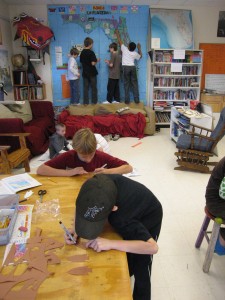
- Take your time!
- Work together.
- Keep it simple.
- “Contrast” is very important
- Make your key in a column of landmarks, not in rows.
- Make things tights and compact because there is going to be more cool things on the map than you can imagine!
- When you make multiple copies of one thing, make them consistent.
- Don’t make anything too wild and crazy with colors and designs (just makes it look complicated).
- Use straight edges.
- Make sure the whole map is legible.
- Make sure the map has the “5 C’s of Keys” (Compactness, Columns, Contrast, Correctness, Consistency)

- Always make the key too big at the beginning – cutting off is better/easier than adding on.
- Always capitalize counties, states, cities or any other thing.
- Always keep track of your thumbtacks. They Hurt!
- Don’t be afraid to ask a friend about what your making for the Florida map to see if she/he has anything to add or help you with.
- Making the Florida map is hard, but ALWAYS have fun with everything you’re doing.
- Ask your teacher how to do a really good job at whatever you’re doing, because the teacher how for you to do your best!
- KISS (Keep It Simple Sillies – keep it easy to read and to look at)
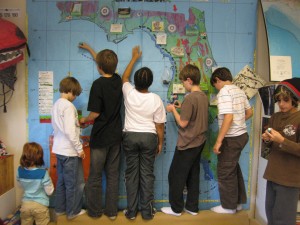
- Make sure the colors you use have contrast.
- Put in effort, take your time and do a quality job.
- Remember that it will take the whole school year.
- Find safe ways to get up high.
- Take your time, because you may be cutting until your hands are numb.
- Make the key big.
- Listen to others.
- Always do pencil first!
- Get a 2nd opinion before making anything permanent.
- Have fun and use lots of glue.

- Do a top knotch job and try your hardest on the area of the map you are working.
- Remember the 5 C’s of Keys: Consistency, Contrast, Columns, Correctness, Compactness.
- Use your resources!
Quick Family Inference Assignment
Tonight (Monday, October 12) students need to write down 4 inferences about their family.
These are intended to be simple. Examples:
My family is always busy.
Everyone in my family treats each other with respect all of the time. (Not a likely one.)
The members of my family value the outdoors.
The next step (Tuesday and Wednesday night) will be for students to prove each of their statements with 4 examples.
Items To Include in Country Map
When working on the map of your country, please be sure to include the following:
- Compass Rose
- Important Landmarks
- Capital
- Other Cities
- Important cultural sites
- Key (or Legend)
- Name of Country
- Bodies of water
- Oceans/Seas
- Bays
- Major lakes
- Major rivers
- Neighboring bodies
- Scale
- Landscape
- Dominant ecosystems
- Regions
- Major systems
- Notable topography
Did I leave anything out? Anything else you think we should include?
Summary Vs. Retelling — A Lesson with Star Wars
Students are expected to summarize their readings 3 times per week in their reading log.
You might be wondering, “Well, what is a summary?”
A summary provides a basic snap shot of the main ideas or plot developments from that day’s reading. This is different from a retelling in which a student shares the sequence of events. Retellings, by contrast, are essentially a type of story telling and often stress details, details, details. Essentially, retellings retell the story.
A summary, on the other hand, might be analogous to brushing your teeth — you only squeeze out the toothpaste you need and leave the rest in the tube. (This is the analogy Writer’s Express uses to characterize summary.) An effectively written summary can demonstrate comprehension better than a retelling. A summary requires reflecting on the reading and pulling out the main ideas while a retelling requires less reflection and thought. It simple requires the memorization of a specific series of events.
“How will I know if my child has done this correctly?”
You will know when the pieces they write provide sufficient big picture information to give you an idea of what they are reading, but do not go so far as to provide so many details that you feel you’ve read the book yourself. Basically, your child should provide the main ideas of the passage(s) they read.
An example from Star Wars, A New Hope:
Summary of Obi Wan and Luke Skywalker at the Cantina:
Obi Wan and Luke Skywalker brave the brawn of a rough-n-tumble intergalactic “watering hole” in search of a pilot. The one they find, Han Solo, proves to be both confident and sarcastic, though it would seem as though he will bring along some problems of his own.
Retelling of Obi Wan and Luke Skywalker at the Cantina:
After using a Jedi mind trick to gain entrance to Mos Eisley, a rough freighter town on the planet Tatooine, Obi Wan and Luke Skywalker head in to Chalmun Cantina in search of a pilot who can transport them to Alderann. While Obi Wan talks to various pilots, Luke goes to the bar where he has a run in with the bartender as well as an alien that is bent on solving a problem with Luke through violence. Obi Wan shows up right in time, and slices off the alien’s arm with his light saber. Surprisingly, while the crowd barely flitches at the violent outburst, they seem more taken aback by the weapon used — a Jedi’s lightsaber. The other bar goers give Obi Wan and Luke a lot more space after that.
Then, Obi Wan and Luke sit down with Han Solo and his furry co-pilot, Chewbacca, to negotiate the terms of their contract. Luke feels quite convinced that Han’s rates are outrageous, but Obi Wan understands the need for secrecy and settles Luke. After they agree to meet at the hanger soon, Han has a run in with a bounty hunter, Greedo, whom Han shoots under the table. When he and Chewbacca leave to meet back up with Obi Wan and Luke, he flips the bartender an extra coin and apologizes for the mess.

